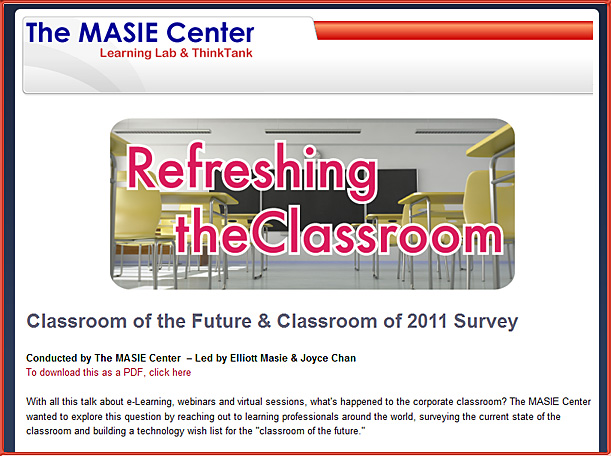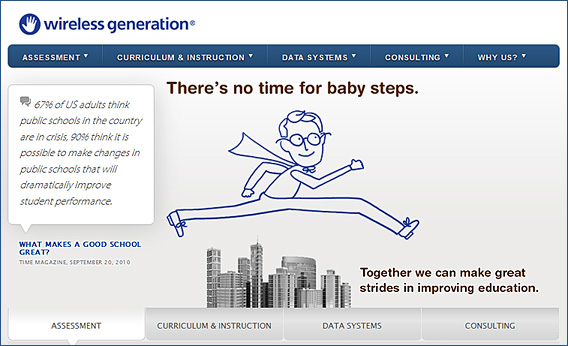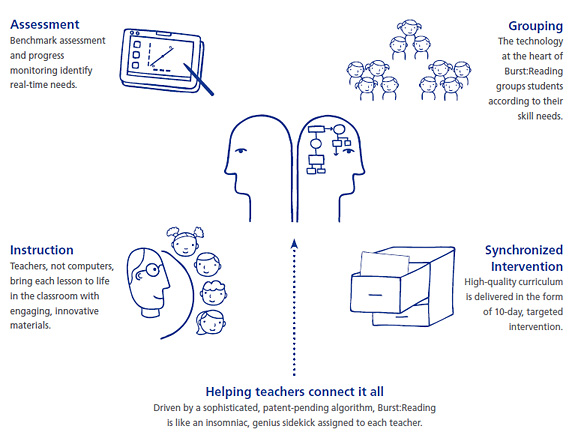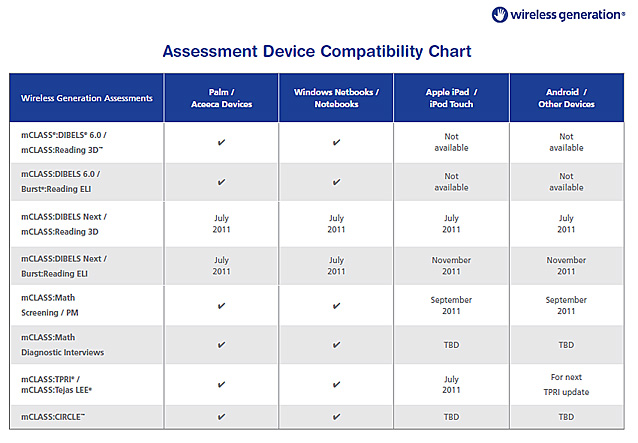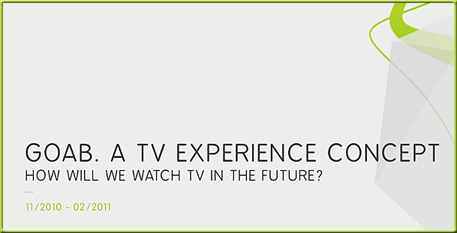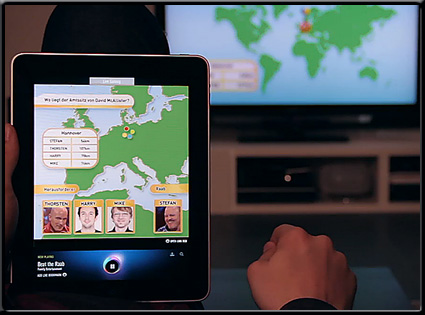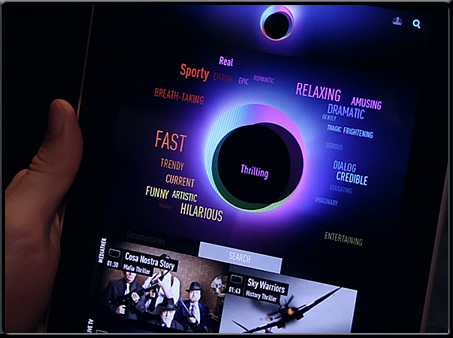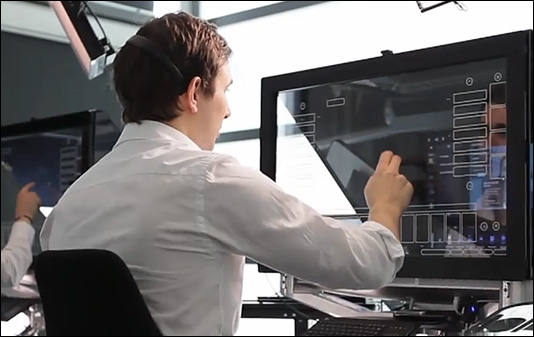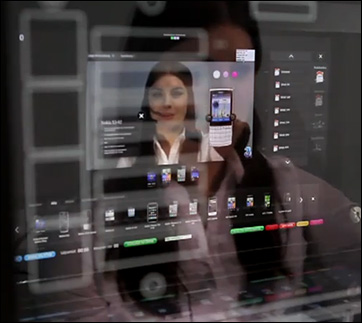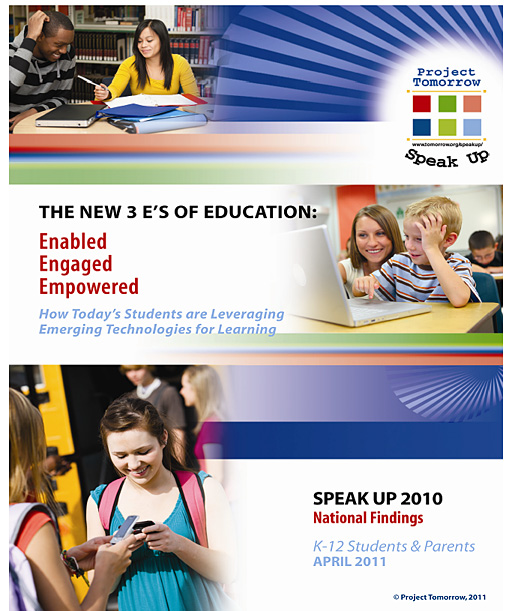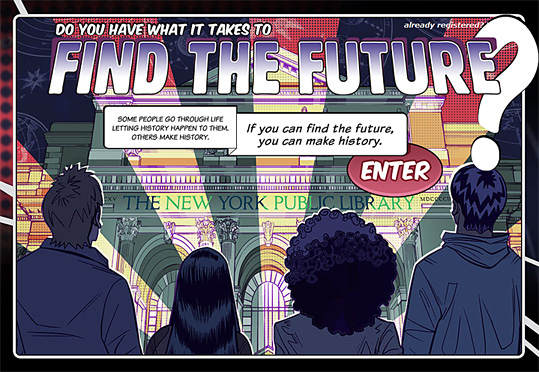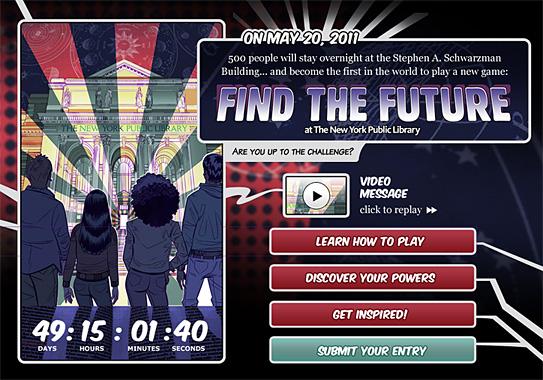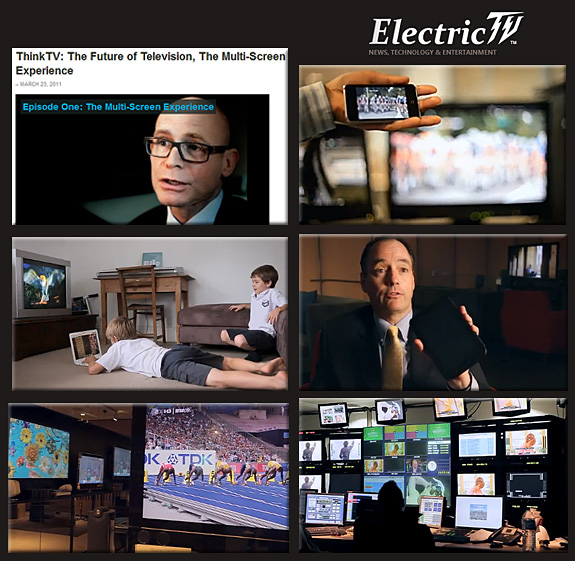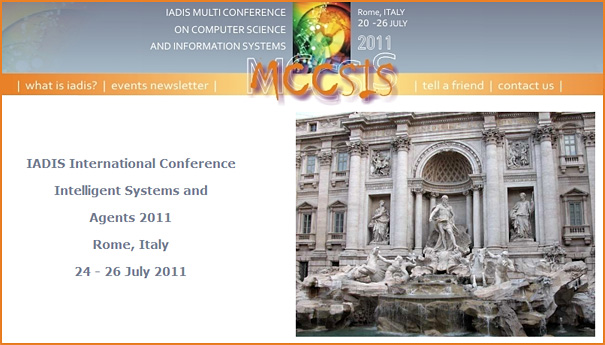Designing for the future web — from SmashingMagazine.com by James Gardner
Swedish Online Store Features Live, Interactive Salespeople [VIDEO] — from Mashable.com
Excerpt:
Swedish telecom company 3 Sweden has bridged the gap between Internet commerce and brick and mortar with 3LiveShop. The new site features employees interacting with customers, live, over videoscreens. As the video above shows, the Chatroulette-like site was made possible with custom-built touchscreens that look like they’re right out of The Minority Report. Using the screens, the online salespeople are able to bring up images of phones the company sells and field questions about them.
Questions/reflections from DSC:
If this does turn out to be the case:
- Should students have a solid comfort level with technology in order to be marketable in the future?
- What changes do we need to make to our curriculums — at all levels — to insure their success in this type of world?
- Will this setup be similar for the online teachers/professors out there?
- Will this type of setup lead to incredible levels of individualized attention? Or will such services only be for people who can afford this level of personalized attention?
- What changes will the corporate world need to make to incorporate this type of channel?
- Will this offer 24x7x365 access, with certain call centers either online 24 hours a day, or different call centers spread throughout the world coming online and offline in synch w/ each other?
Except from How School Screws Things Up For “Real Life” — from Michelle Martin (emphasis DSC)
What we really need to be teaching young people, if we truly want to prepare them for the “real world,” is that:
- Work and its problems are really ill-defined. Rarely are there “right” answers. More often than not we are having to make trade-offs that force us to choose between “bad” and “worse” or at least between “OK” and “less OK.” There are always going to be extenuating factors and issues that impede our ability to achieve the ideal, even in those situations that seem the most clear-cut.
- Sometimes hard work is rewarded. Sometimes it is not. Sometimes following the rules is rewarded. Sometimes it is not. The challenge is learning when to stop beating our heads against a particular brick wall where our hard work and rule-following is not working. When do we need to break the rules? When do we need to work hard at something else or somewhere else?
- Related to this, working harder isn’t always the answer. Sometimes we are in situations where problems go unsolved and issues are unresolved because of things that are entirely outside of our control. Sometimes there is no answer and we have to learn the lessons of patience and of moving to a new situation, rather than just buckling down and trying to make the best of what we have.
- There is no “light at the end of the tunnel.” There is just more tunnel. Some parts of the tunnel are darker and some have more light flickering in. But there is always tunnel and we are never sure what lies at the other end.
From DSC:
I don’t post this to hammer teachers. Everyday when I drop off my daughter to her school early (so she can feed the animals there), I thank the LORD for the teachers at that school and everywhere! Teachers are awesome!
I post this because it resonates w/ my experiences.
Also see:
- The New 3 E’s of Education: Enabled, Engaged and Empowered
How Today’s Students are Leveraging Emerging Technologies for Learning - What Do Kids Say Is The Biggest Obstacle To Technology At School? — from ReadWriteWeb.com by Audrey Watters
10 reports on the near future of learning — from EdReformer.com by Tom Vander Ark
This edition of Projections of Education Statistics provides projections for key education statistics, including enrollment, graduates, teachers, and expenditures in elementary and secondary public and private schools. Included are national data on enrollment and graduates for the past 15 years and projections to the year 2019. Also included are state-level data on enrollment in public elementary and secondary schools and public high schools from year 2001 and projections to year 2019. This report is organized by the level of schooling with sections 1, 2, 3, and 4 concerned with aspects of elementary and secondary education and sections 5 and 6 concerned with aspects of post secondary education.
From DSC:
In my mind, this area of intelligent systems and agents is one of the most important areas to watch in the years ahead. Such efforts should help us develop sophisticated systems that can help deliver personalized, customized education at the K-12 and higher ed levels…and perhaps will be relevant in the L&D space as well.
The innovations that come from this area may make hybrid-based — as well as 100% online-based learning — incredibly powerful!
If someone can develop such systems and make them available at far cheaper prices than exist today, a quality “Walmart of Education” will truly have been built.
Per the Call for Papers section, the topics for this conference include, but are not limited to:
| Area 1 – Intelligent Systems
– Algorithms – Artificial Intelligence – Automation Systems and Control – Bioinformatics – Computational Intelligence – Expert Systems – Fuzzy Technologies and Systems – Game and Decision Theories – Intelligent Control Systems – Intelligent Internet Systems – Intelligent Software Systems – Intelligent Systems – Machine Learning – Neural Networks – Neurocomputers – Optimization – Parallel Computation – Pattern Recognition – Robotics and Autonomous Robots – Signal Processing – Systems Modelling – Web Mining
|
Area 2 – Agents
– Adaptive Agent Systems – Agent Applications – Agent Communication – Agent Development – Agent middleware – Agent Models and Architectures – Agent Ontologies – Agent Oriented Systems and Engineering – Agent Programming, Languages and Environments – Agent Systems – Agent Technologies – Agent Theories – Agent Trends – Agents Analysis and Design – Agents and Learning – Agents and Ubiquitous Computing – Agents in Networks – Agents Protocols and Standards – Artificial Systems – Computational Complexity – eCommerce and Agents – Embodied Agents – Mobile Agents – Multi-Agent Systems – Negotiation Strategies – Performance Issues – Security, Privacy and Trust – Semantic Grids – Simulation – Web Agents |
The future of broadcast is more than integrating tweets into programming — from Brian Solis
The future of broadcast is literally at our fingertips…
MBA Curriculum Changes: Wharton, Yale, and Stanford Lead the Pack — from knewton.com by Christina Yu
Excerpt (citing article from a U.S. News article):
“Rather than consider pre-digested summaries of company situations, students tackle ‘raw cases’ packed with original data. Instead of being presented with an income statement, for example, they must mine the considerably bulkier annual filing to the Securities and Exchange Commission for data. The raw cases ‘push us to understand,’ says second-year Yale student Jason Hill. ‘They purposely put in more material than you could ever look at, but you have to learn where to look.’” (emphasis DSC)
From DSC:
I found this to be a good, interesting post. I just had a couple of thoughts that I wanted to throw out there re: it.
In looking at trends from an 80,000-foot level, I’d vote for MBA programs integrating much more of the tech-know-how — and/or appreciation of what technologies can bring to the table — as well as teaching grad students about some of the tools/technologies that are emerging these days (and I’d bet that the leaders/schools mentioned in this article are already doing this) .
I remember an instructor years ago — at SFSU’s MSP Program — saying that bots and agents will be the key to making decisions in the future, as there will be too much information for a person to sift through. The streams of content need to be tapped — but in efficient ways. So perhaps the logical step here is for MBA students to learn what bots/agents are, how to use them, and what their applications might be in making business/strategic decisions.
The most successful organizations of the future will be well-versed in technologies and what the applications/benefits of these technologies are. My bet? If you don’t have a technologist at the power table of your organization, the outlook doesn’t look very bright for your organization in terms of surviving and thriving in the future. Organizations will also need to be willing to take risks and move forward without having a full cost-benefit analysis done — as many times these don’t work well or are not even possible when implementing tech-based endeavors/visions.
Also relevant here:
.
Also see:
- How does education prepare tomorrow’s leaders for this fast paced interconnected business world?
Roger Martin, Daniel Pink and Jim Keane Discuss this in the Live Steelcase 360 Discussion: Educating the Creative Leaders of Tomorrow
NEW YORK – March 18, 2011 – Coming out of the recent recession, problems are more complex, markets are more volatile and change is more rapid. Education must keep pace. So how can educators prepare students to lead in today’s interconnected world? Today, Steelcase is bringing together three of the most influential thinkers on management and education to discuss this topic in its live, virtual panel discussion: Educating the Creative Leaders of Tomorrow.









